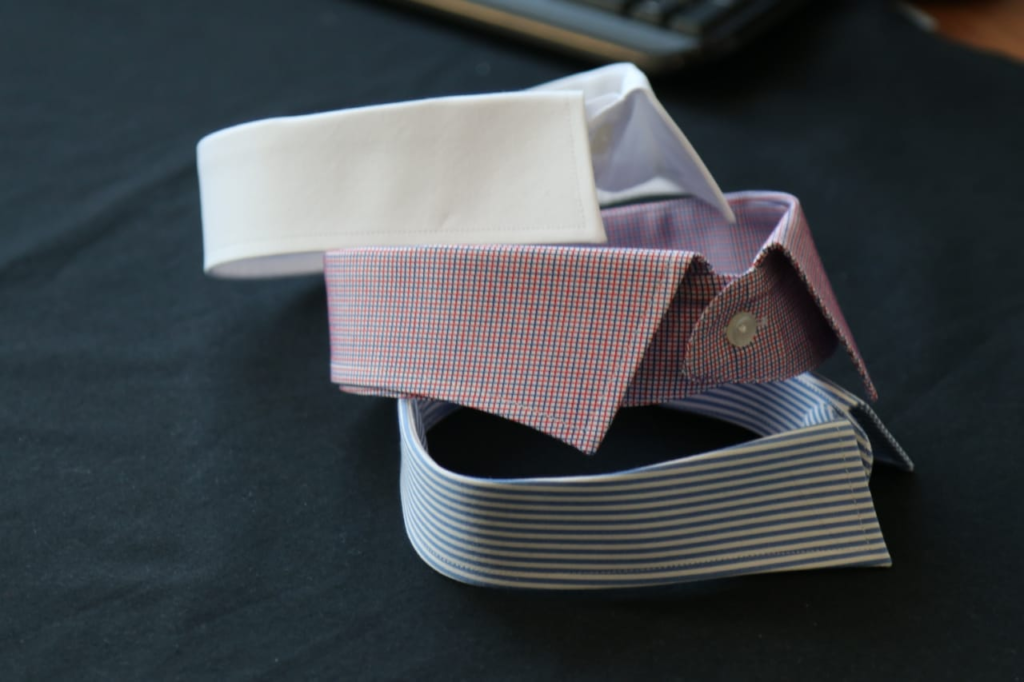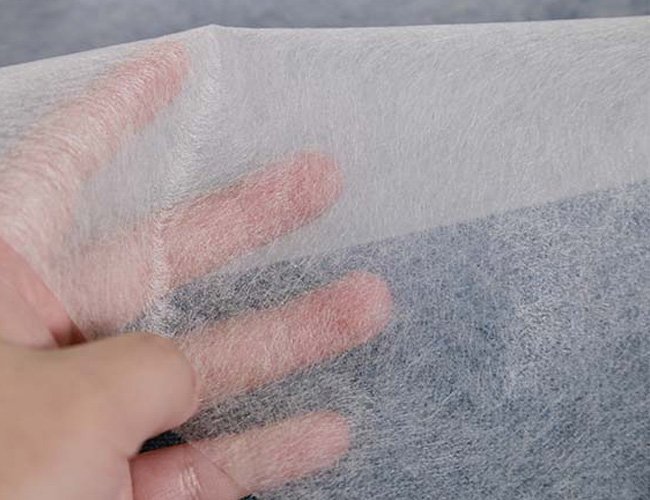Introduction
As a garment manufacturer, you understand that every component affects the final product. Fusible interlining may not be visible, but it plays a critical role in shirt construction. It gives shape to collars, cuffs, and plackets. If you use poor-quality interlining, your shirts may bubble, shrink, or lose shape after washing. This lowers product value and damages customer trust.
You need to identify quality interlining before production begins. Check how well it bonds with the fabric. Feel the base material. Test its durability after washing. Small details can make a big difference.
This guide helps you judge fusible interlining with confidence. You will learn what to look for, how to run basic tests, and how to choose the right supplier. Choosing high-quality interlining improves shirt appearance, extends wear life, and increases customer satisfaction. Start with the basics and build shirts that meet both your standards and your buyers’ expectations.
What Is Shirt Fusible Interlining?
You use fusible interlining to add structure and support to the inside of shirts. It strengthens collars, cuffs, plackets, and front panels. This interlining has adhesive on one side. When you apply heat and pressure, it sticks firmly to the shirt fabric.
Why You Need Fusible Interlining
Without good interlining, collars and cuffs can look soft or lose shape quickly. Fusible interlining helps your shirts hold their form. It keeps the collar crisp and the cuffs neat. It also makes shirts look polished and professional.
Choose the Right Type
You can choose from various types of fusible interlining. Some are lightweight and stiff, making them great for formal shirts. Others are softer and more flexible, making them better suited for casual styles. Always match the interlining to your shirt fabric and design.
Apply It Correctly
To achieve a strong bond, control heat, pressure, and time during the fusing process. Proper application prevents bubbling or peeling later. When fused well, the interlining stays secure even after many washes.

Why Does the Quality of Fusible Interlining Matter?
- Keep your shirts looking sharp.
High-quality fusible interlining keeps collars and cuffs firm. It prevents bubbling, wrinkles, and sagging. Your shirts stay crisp and polished wash after wash. - Avoid production problems
Poor-quality interlining can peel or fuse unevenly. This causes defects and extra work. Using reliable interlining reduces waste and speeds up your production. - Deliver comfort and durability.
Customers want comfortable shirts that last. Low-quality interlining can cause shirts to become stiff or misshapen over time. Good interlining keeps shirts soft but structured, improving wearer satisfaction. - Protect your brand reputation.
Every shirt reflects your brand. Shirts that lose their shape or appear worn quickly can damage customer trust. Quality interlining demonstrates your focus on details and helps build a premium reputation.
How Can You Tell If Fusible Interlining Is High Quality?
Check Bonding Performance
Ensure the interlining fuses evenly with your shirt fabric. It should have no bubbles, wrinkles, or peeling. A strong, smooth bond lasts through many washes.
Feel the Base Fabric
Touch the interlining. It should be soft but firm enough to support collars and cuffs. Avoid stiff or brittle materials that might crack or feel uncomfortable.
Measure Shrinkage Rate
Good interlining holds its size after washing. High shrinkage causes puckering and distorts the shirt’s shape. Choose interlining with minimal shrinkage for lasting fit.
Examine Adhesive Quality
The resin should melt evenly at the right temperature. It must bond securely without harming the outer fabric. Poor adhesives lead to peeling and defects.
Check Color and Transparency
The interlining should closely match the color of your shirt fabric. It must stay invisible, especially under light or thin fabrics.
Review Test Results
Ask for peel strength and wash durability tests. These demonstrate the effectiveness of the interlining over time.
By inspecting these key points, you can choose fusible interlining that keeps your shirts durable and of high quality.

What Factors Determine Interlining Quality?
To make great shirts, you must choose the right fusible interlining. Several key factors affect its quality. Here’s what you need to check.
How Well Does It Fuse with the Fabric?
Your interlining must bond evenly and smoothly to the shirt fabric. Avoid materials that bubble, wrinkle, or pucker during the fusing process. Ensure it remains firmly in place after multiple washes. Test it with your specific fabric to ensure compatibility.
Is the Adhesive Resin Reliable?
The adhesive activates with heat. You want resin that melts evenly and bonds strongly. It should not damage or discolor the fabric of your shirt. Low-quality adhesives cause peeling and weak bonds. Always verify resin type and melting temperature with your supplier.
What’s the Quality of the Base Fabric?
The base fabric supports collars, cuffs, and plackets. It should feel soft yet firm. Look for fine yarns and a tight weave. Avoid stiff or bulky materials that reduce comfort and cause fabric distortion.
Does the Interlining Shrink After Washing?
Shrinkage ruins the shirt’s shape. Select interlining that remains stable after multiple washes. Run washing tests to check shrinkage. Low-shrink materials help your shirts keep their fit.
Is It the Right Color and Transparency?
Match the interlining color to your shirt fabric. It should not show through, especially on light or thin shirts. Semi-transparent interlining gives a clean, invisible finish.
How Durable Is It After Multiple Washes?
Durability is key. Good interlining resists peeling, curling, and warping after repeated laundering. Check test results or do your washing trials. Durable interlining helps keep your shirts looking great for longer.
What Tests Are Used to Check Interlining Quality?
To ensure your shirts look and last their best, you must test the fusible interlining before production. Here are the key tests you should know.
Peel Strength Test
You need interlining that bonds strongly to your fabric. The peel strength test measures the force required to separate the fused layers. High peel strength means the interlining will stay attached through many washes.
Wash Durability Test
Wash your fused fabric multiple times to check durability. Look for peeling, bubbling, or distortion after washing. Good interlining maintains its bond and shape even after repeated laundering.
Shrinkage Test
Shrinkage affects shirt fit and appearance. Measure the shrinkage of the interlining and fabric after washing. Choose interlining with minimal, consistent shrinkage to prevent puckering and warping.
Heat and Pressure Compatibility Test
Test how well the interlining bonds at your pressing temperature and pressure. Poor compatibility leads to uneven fusion or fabric damage. Use this test to find the right heat settings and materials.
What Are Common Problems with Low-Quality Interlining?
Using low-quality fusible interlining can lead to numerous problems. As a garment manufacturer, you want to avoid these issues to protect your product and maintain a good reputation.
- Bubbling and Wrinkling
Poor interlining often fuses unevenly. This creates bubbles and wrinkles under the fabric. It ruins the smooth, clean look your customers expect. - Peeling and Delamination
Low-quality adhesive can weaken after washing. The interlining may peel or separate from the fabric. This breaks down the shirt’s structure and shortens its life. - Shrinkage and Puckering
Interlining with high shrinkage causes fabric distortion. The shirt can pucker or lose shape, especially around collars and cuffs. This hurts fit and comfort. - Uneven Stiffness
Cheap interlining feels stiff in some areas and soft in others. This inconsistency affects fit and creates an unprofessional finish. - Poor Durability
Low-grade interlining warps, curls, or crumbles after washing and ironing. This leads to early garment failure and unhappy customers.
How Do You Choose a Reliable Interlining Supplier?
Check the Product Range
Work With Suppliers Who Offer a Wide Selection of Fusible Interlining. You Need Options for Different Shirt Fabrics and Styles. A Broad Product Range Means More Flexibility in Your Designs.
Ask for Technical Data
Request Technical Sheets for Each Interlining Type. Look for Bonding Temperature, Resin Type, and Shrinkage Rate. These Details Help You Match Interlining to Your Production Needs.
Test With Your Fabric
Don’t Skip Testing. Fuse Sample Interlining to Your Actual Shirt Fabric. Check for Smooth Bonding, Proper Stiffness, and Wash Durability. A Reliable Supplier Will Provide Samples for Trial.
Review Test Certifications
Ask for Third-Party Test Reports. Look for Strong Peel Strength, Low Shrinkage, and High Wash Resistance. These Tests Prove Product Performance Over Time.
Evaluate Supply Capacity
Make Sure the Supplier Can Meet Your Volume and Timelines. Delays in Interlining Delivery Can Stall Your Entire Production Process.
Assess Communication and Support
Good Suppliers Answer Quickly and Offer Technical Help. Clear Communication and Strong Support Reduce Production Issues.
Build Long-Term Trust
Stick With Suppliers Who Consistently Deliver Quality. A Strong Partnership Ensures Smooth Production and Better Shirt Performance. Quality Interlining Starts With the Right Supplier.

How Should You Evaluate Interlining Before Bulk Production?
Test With Your Actual Fabric
Always request interlining samples from your supplier. Fuse them using your factory’s heat, pressure, and time settings. Use the same machines and processes you plan to use in production. This gives you accurate results.
Inspect the Bonding
Check the bonded fabric closely. Make sure there are no bubbles, wrinkles, or peeling. A strong, smooth bond is a sign of good interlining.
Wash and Recheck
Wash the fused sample several times. Look for signs of peeling, shrinking, or loss of shape. Quality interlining stays secure and keeps collars and cuffs crisp after washing.
Check the Feel and Flexibility
Touch the fused area. It should feel structured but not stiff. Match the interlining type to your shirt style—use firm interlining for formal shirts and softer types for casual ones.
Review Appearance
Make sure the interlining doesn’t show through the shirt fabric. This is especially important for light or thin materials. Color and transparency should match the fabric.
Get Team Feedback
Ask your sewing and quality teams for input. They can spot bonding or stitching issues early.
Run a Full Trial
Always test before bulk production. It helps avoid defects, reduces waste, and keeps your shirts looking sharp and professional.
Conclusion
You must carefully judge the quality of fusible interlining. Check how well it bonds to your shirt fabric. Feel the base material for the right balance of softness and firmness. Test samples by washing them multiple times. Look for bubbling, peeling, or shrinking.
Always run peel strength and durability tests to ensure optimal performance. Work only with reliable suppliers who provide clear data and support your testing. By choosing high-quality interlining, you keep your shirts crisp and durable. This prevents production problems and ensures your customers’ satisfaction. Focus on quality interlining to make better shirts and grow your brand.
FAQs
What Is Fusible Interlining, and Why Is It Important?
Fusible interlining is a material with adhesive that bonds the outer shirt fabric when heated. It provides structure to collars, cuffs, and plackets, helping shirts maintain their shape and appearance.
How Can I Tell if Fusible Interlining Is High Quality?
Check for strong, even bonding with no bubbles or wrinkles. The interlining should feel soft but supportive and resist shrinking after washing.
What Tests Should I Run to Evaluate Interlining Quality?
Perform peel strength tests to measure bonding force, wash durability tests to check for peeling or distortion, and shrinkage tests to ensure shape retention.

